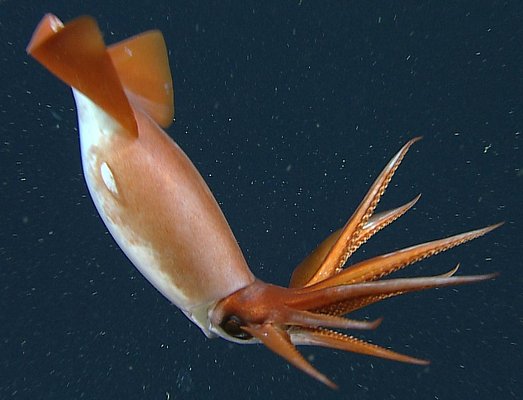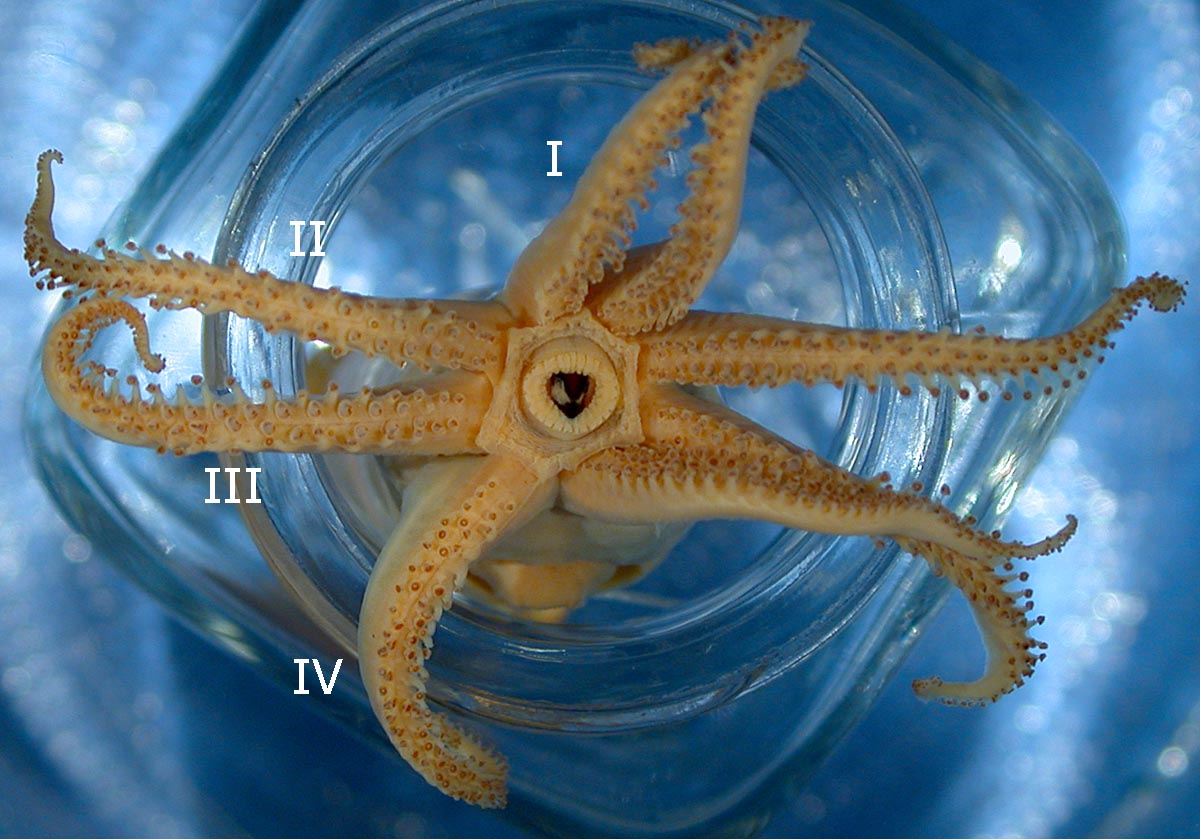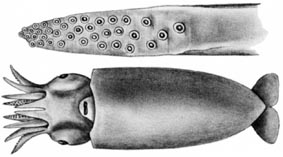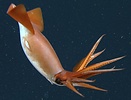Gonatopsis
Tsunemi Kubodera, F. G. Hochberg, Richard E. Young, and Michael Vecchione


This tree diagram shows the relationships between several groups of organisms.
The root of the current tree connects the organisms featured in this tree to their containing group and the rest of the Tree of Life. The basal branching point in the tree represents the ancestor of the other groups in the tree. This ancestor diversified over time into several descendent subgroups, which are represented as internal nodes and terminal taxa to the right.

You can click on the root to travel down the Tree of Life all the way to the root of all Life, and you can click on the names of descendent subgroups to travel up the Tree of Life all the way to individual species.
For more information on ToL tree formatting, please see Interpreting the Tree or Classification. To learn more about phylogenetic trees, please visit our Phylogenetic Biology pages.
close boxCharacteristics
- Arms
- Hooks in medial two armature series on arms I-III.
- Tentacles
- Tentacles absent beyond early juvenile stages.
- Head
- Radula with teeth in 5 or 7 series depending on species.
- Mantle
- Mantle tissue muscular or flabby depending on species.
- Fins
- Fins rhomboid or sagittate in shape depending on species.
- Photophores
- Photophores absent.
Comments
Gonatopsis is divided into two subgenera on the basis of the radular structure. G. (Gonatopsis) with a five-tooth radula and G. (Boreoteuthis) with a seven-tooth radula.
| Species / Character | Habitat | Numerous sucker series at arm tips | Radular teeth | Arm length | Tail length |
| G. borealis | North Pacific | No | 7 | 40-50% ML | No tail |
| G. japonicus | Japanese waters | No | 5 | 55% ML | long |
| G. makko | Northern-, western North Pacific | No | 5 | 65% ML | very short |
| G. octopedatus | Western North Pacific, ? Gulf of California | Yes | 5 | 80-85% ML | No tail |
| G. okutanii ? * | Western North Pacific | No | 5 | ca. 100 % ML | ? |
Life History
Tentacles are present in paralarvae but are lost at different early stages depending on the species (Nesis, 1973).
References
Young, R.E. 1972. The Systematics and Areal Distribution of Pelagic Cephalopods from the Seas off Southern California. Smithsonian Contributions to Zoology, 97:159 pages.
Title Illustrations

| Scientific Name | Gonatopsis borealis |
|---|---|
| Location | Eastern North Pacific off Monterey, California at 37.7°N, 122.0°W |
| Comments | In situ photograph of Gonatopsis borealis taken at a depth of 306 m (daytime). |
| Acknowledgements | Image courtesy of the Monterey Bay Aquarium Research Institute (MBARI). You must obtain permission from MBARI to use this photo; please contact pressroom@mbari.org for further information. |
| Specimen Condition | Live Specimen |
| Identified By | R. E. Young |
| View | Side |
| Size | Unknown |
| Copyright | © 2012 MBARI |
About This Page

National Science Museum, Tokyo, Japan
F. G. Hochberg

Santa Barbara Museum of Natural History, Santa Barbara, California, USA

University of Hawaii, Honolulu, HI, USA

National Museum of Natural History, Washington, D. C. , USA
Page copyright © 2014 , F. G. Hochberg, , and
 Page: Tree of Life
Gonatopsis .
Authored by
Tsunemi Kubodera, F. G. Hochberg, Richard E. Young, and Michael Vecchione.
The TEXT of this page is licensed under the
Creative Commons Attribution-NonCommercial License - Version 3.0. Note that images and other media
featured on this page are each governed by their own license, and they may or may not be available
for reuse. Click on an image or a media link to access the media data window, which provides the
relevant licensing information. For the general terms and conditions of ToL material reuse and
redistribution, please see the Tree of Life Copyright
Policies.
Page: Tree of Life
Gonatopsis .
Authored by
Tsunemi Kubodera, F. G. Hochberg, Richard E. Young, and Michael Vecchione.
The TEXT of this page is licensed under the
Creative Commons Attribution-NonCommercial License - Version 3.0. Note that images and other media
featured on this page are each governed by their own license, and they may or may not be available
for reuse. Click on an image or a media link to access the media data window, which provides the
relevant licensing information. For the general terms and conditions of ToL material reuse and
redistribution, please see the Tree of Life Copyright
Policies.
- First online 25 October 2004
- Content changed 06 December 2014
Citing this page:
Kubodera, Tsunemi, F. G. Hochberg, Richard E. Young, and Michael Vecchione. 2014. Gonatopsis . Version 06 December 2014 (under construction). http://tolweb.org/Gonatopsis/19764/2014.12.06 in The Tree of Life Web Project, http://tolweb.org/









 Go to quick links
Go to quick search
Go to navigation for this section of the ToL site
Go to detailed links for the ToL site
Go to quick links
Go to quick search
Go to navigation for this section of the ToL site
Go to detailed links for the ToL site